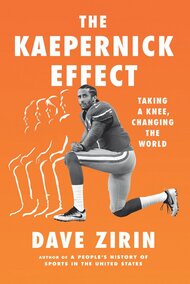Gustav and the Dome

I know the media says that New Orleans "dodged a bullet" but there is a great deal of work to be done – not just to rebuild but to get people back home.
Check out the massive padlock on the dome. That will tell you all youneed to know about Hurricane Gustav and the federal government'scarefully orchestrated response. The padlock, that looks roughly thesize of a Frisbee, is set firmly around the doors of the LouisianaSuperdome. The padlock articulates a message that would be clear toeven a Bush or a Brownie: this storm will not be Katrina. By that Idon't mean, "We've learned a lot in the last three years" or whatevertalking points the White House is putting out.
The padlock makes clear that the public relations hurricane battlehas been well engaged. There will be no photo ops of 30,000 peopleherded into a luxury stadium that magically morphs into a homelessshelter from hell. There will be no opening up the stadium to the poorand unwashed, not after spending 185 million bucks torebuild the dome and not with the NFL season right around the corner.There will be no one left behind, even if it means putting people onbuses, taking them hundreds of miles away, and not even telling themthe destination for them and their families. And, more than anythingelse, the padlock in all of its metallic, glistening glory, is aself-incriminating indictment. It is an admission that despite what wewere told three years ago, a stadium isn't really shelter; that the actof forcing people at gunpoint into the dome was a criminal act; andthat believing any stadium could have redeeming social value as anemergency evacuation center, is a lie.
The padlock on the Superdome prevents any more ugly backdrops for"When the Levees Broke II", and preserves the pristine field for DrewBrees, Reggie Bush, and the rest of the Saints. But it also raises morequestions than answers: if people aren't in the dome, then where arethey?
Where are New Orleans' 12,000 homeless residents, double the pre-Katrina numbers?
Where are the 17,000 residents of greater New Orleans still living in FEMA trailers?
Wherewill people live when they return? Why won't the city call for thesuspension of the planned bulldozing of the city's four largest housingprojects? How will the people being bussed out, be able to move back iftheir homes have been flattened? If people can't make it home, willthey find their residence somewhere even more frightening than the dome?
New Orleans mayor Ray Nagin said over the weekend, "Anybody who'scaught looting in the city of New Orleans will go directly to Angola[Louisiana State Penitentiary]. You will not have a temporary stay inthe city. You go directly to the big house, in general population."
Considering that many of the so called looters after Katrina, werefighting for their lives, and considering that the media hadcolor-coded looters, with white residents classified as heroes, theimplications of Nagin's dictate is chilling. It's horrifying to thinkthat they could be laying their head in the former slave plantationknown as Angola.
And what will the fate be of the hero as of now, the wetlands? Thewetlands absorbed the worst of Gustav, before the hurricane slammedinto the great city. As New Orleans resident and comedian Harry Shearersaid, "We're losing Wetlands at a rate of a football field every 45minutes."
The padlock is also a reminder of all the people, 25% of thepre-Katrina population, who haven't been able to return to the city.How can they have the hope of return when rents have gone up 46% in thelast two years? When will this ever be addressed?
The future of New Orleans will depend on our ability to answerthese questions. And no amount of shameless political posturing canavoid this.
E of S Nation: if you have the funds, and have something to give forthose rebuilding after Hurricane Gustav in New Orleans, please click on the below link http://www.commongroundrelief.org/taxonomy/term/12/9
More columns ⇒
Support the Work
Please consider making a donation to keep this site going.
Featured Videos
Dave on Democracy Now!

